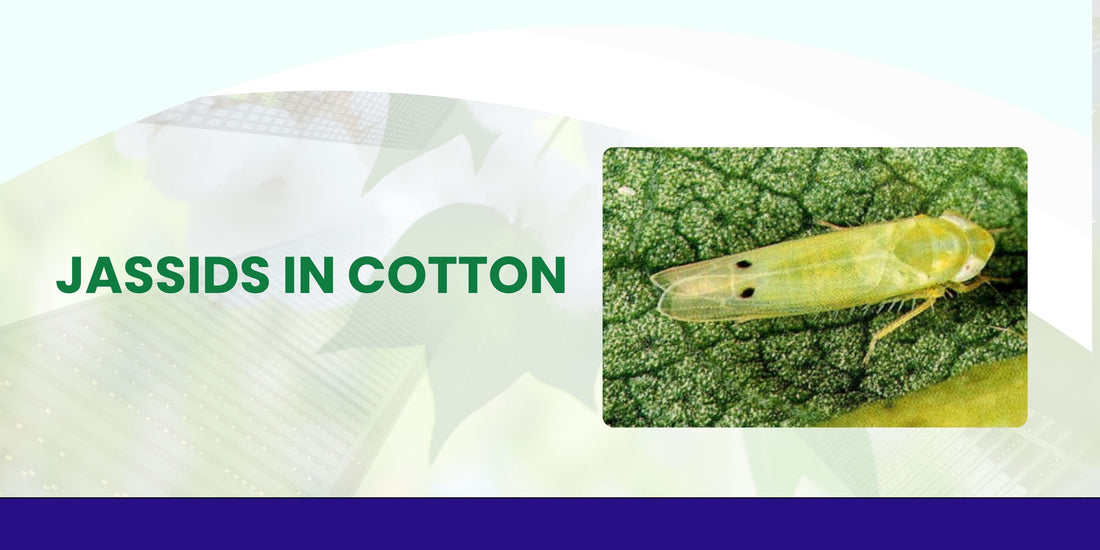
JASSIDS IN COTTON
Telugu name: Pacha doma
Scientific name: Amrasca devastans
Identification of the pest:
Nymph: Light green, translucent, wingless found between the veins of leaves on the under surface.
Adult: Green, wedge shaped leafhopper.
Lifecycle:
Adult female leafhoppers each lay between 60-200 eggs beneath the epidermis of the stalk or leaf, during their 2-3 week life span. The eggs hatch 6-10 days after oviposition and the nymphs pass through five ecdyses in the next 14-18 days before the adult stage is reached.
Symptoms:
- Tender leaves become yellow.
- The margin of the leaves start curling downwards and reddening sets in.
- In the case of severe infestation leaves get a bronze which is typical "hopper burn" symptom.
- The margins of the leaf get broken and crumble into pieces when crushed.
- The leaves dried up and shed and growth of the crop is retarde.
Favourable Conditions:
- Jassids thrive in warm and dry weather.
- They are more active in the early crop growth stage.
- Poorly maintained fields or overuse of nitrogen fertilizers can increase their population.
ETL: 2 jassids per leaf or if leaves show a yellowing of the margin on 15% of plants.
Management:
Cultural practices:
- Use resistant varieties of cotton like LRA 5166, F846, or Khandwa 2.
- Remove weeds and alternate host plants like bhindi (okra) that can harbor jassids.
- Avoid early sowing to escape peak jassid activity.
- Avoid excessive nitrogen application.
- Follow Crop rotation, Rotate with non-host crops like cereals or pulses.
Biological methods:
- Use natural enemies like Ladybird beetles and green lacewings, which feed on jassids.
- Parasitoids such as Anagrus or Stethynium species.
- Spray neem-based biopesticides (like neem oil or azadirachtin) to reduce jassid populations.
Chemical control:
- Use insecticides only if ETL is crossed.
Recommended options:
- Imidacloprid 17.8% SL: 3 ml per 10 liters of water.
- For Effective control of Jassids in cotton,spray “Dr. ELIMINATOR”@250 ml/acre.
- Rotate chemicals to avoid pest resistance.
- Always follow the recommended dose and safety precautions while spraying.
Product link: https://www.khethari.com/products/dr-eliminator-insecticide?_pos=2&_sid=d28867eee&_ss=r

FAQs:
1.How to identify jassid attack on cotton plants?
Yellowing leaves with curled edges or leaves that turn reddish-brown. These are signs of jassid damage.
2.What are the favourable conditions for jassid infestation?
Jassids are more active during warm and humid weather, especially in the early stages of crop growth.
3.How do jassids spread in my cotton field?
They spread through wind and by jumping from plant to plant. Infestation can worsen if nearby fields are already affected.
4. What is the ETL for jassid in Cotton?
2 jassids per leaf or if leaves show a yellowing of the margin on 15% of plants.
5. What chemical options are available to control jassids?
Use recommended insecticides like neem-based sprays or specific chemical sprays such as Imidacloprid or Thiamethoxam. Follow instructions carefully.For effective control of Jassids use Biopesticide “Dr.Eliminator”.
